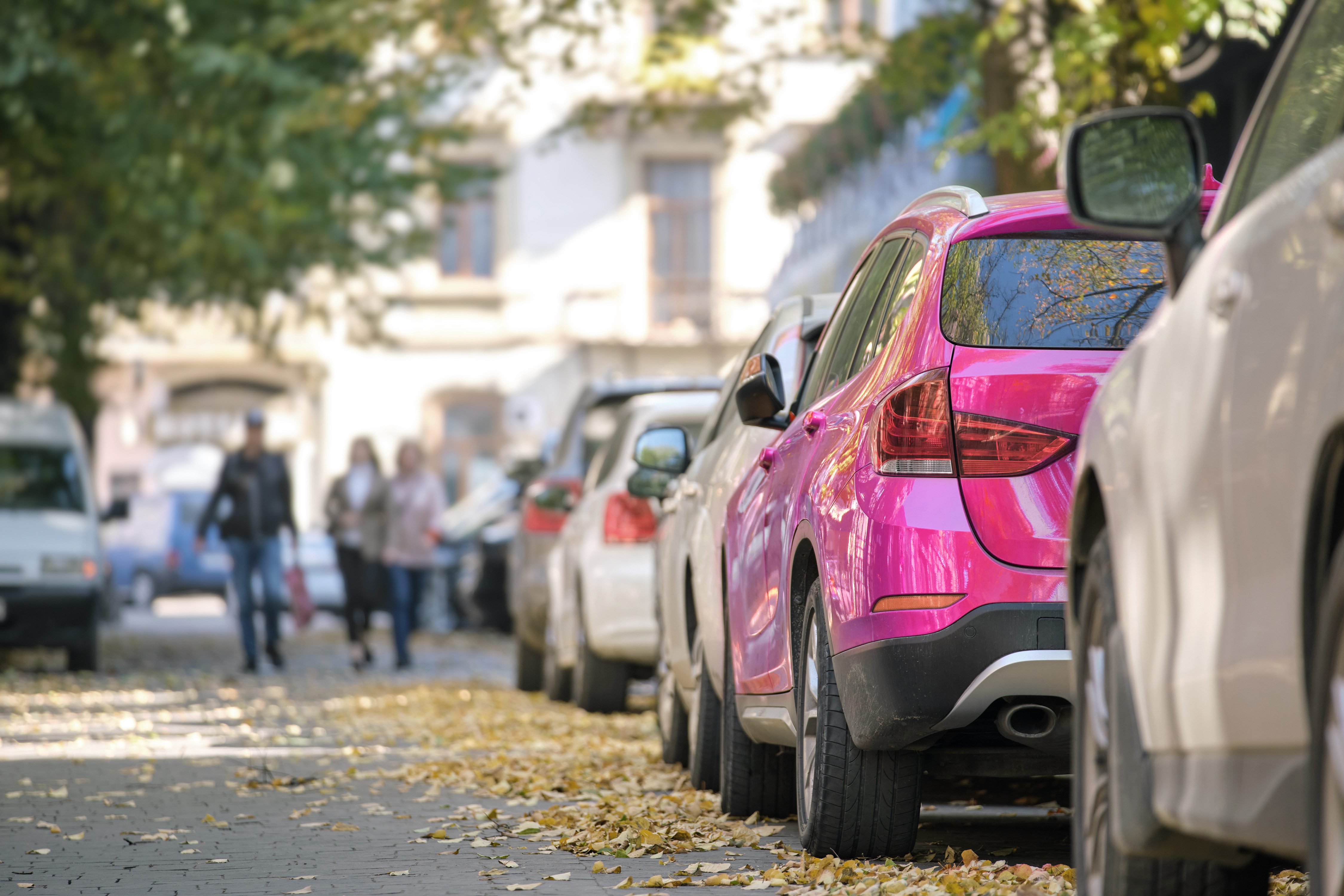Big cars – a new challenge for cities
Cars are getting increasingly bigger, and it affects cities. EasyPark Group has compiled research and data that shows the rapid growth of cars and what cities can do to tackle it. EasyPark Insights helps cities make data-driven decisions, enabling them to better manage these challenges and make cities more livable.

“Autobesity”, is a new term for an increasingly more common challenge that cities may have to confront in the future. The term broadly describes the potential issue of cars becoming larger. Research from Transport & Environment (T&E) shows that cars are getting 1 cm wider every 2 years. And on top of that, the SUV’s are becoming a more common sight in urban areas. While the cars continue to expand, in both width and length, the parking spots or on-street parking on roads hasn’t been dimensioned to fit the new growing car fleet.
The development with growing cars might hinder accessibility on the road for vehicles and also for bicycles and pedestrians. According to T&E’s research the average width of new cars has since 2018 expanded from 177,8 cm to 180,3 cm. The SUV market accounts for almost half (46 percent) of global car sales which means cities might soon have to tackle this. In France, for example, earlier this year Parisians voted in favor of a new referendum which charges SUV drivers higher parking fees compared to coupe and hatchbacks. The parking fee takes weight and size of vehicle into consideration. This action is not only to manage space in the City of Paris but also to tackle its problems with air pollution and motor traffic dominance.
“Different cities have different challenges and EasyPark Group has the insights to support when cities plan for the future. As cars grow bigger they risk impacting the livability of cities by increasing the strain on already limited spaces. Meeting the demands of a changing car fleet requires an effective traffic management infrastructure, built on both technology and data. EasyPark Insights, which gathers valuable data, can help cities make informed decisions on how to tackle this trend while keeping their spaces livable for drivers and pedestrians alike.” said Cameron Clayton, CEO of EasyPark Group.
SUVs on the rise - US leading the charge
In recent years, the SUV market has seen significant growth across Europe, with various models capturing the hearts of consumers in different countries. While the models vary between the countries, all countries have seen a growth in sales of SUVs. When comparing Europe’s growth in SUV to the US, it is fairly similar. In 2022 the sales of SUVs (among new cars) in Europe was 5.2 million units, compared to over 6 million in the US. But when looking closer, the sale was only a 2,9 percent increase from 2021 in Europe while the corresponding number in the US was an increase of 15 percent. And while the Tesla Model Y dominates across the European SUV market, Toyota RAV4 is the most popular one in the US.
Most popular SUVs country-by country based on sales (2022):
Italy: Jeep Compass
Slovakia: Škoda Kamiq
Portugal: Peugeot 2008
Spain: Hyundai Tucson
Czech Republic: Škoda Karoq
Austria: Tesla Model Y
Slovenia: Volkswagen T-Cross
Belgium: Tesla Model Y, BMW X1
Sweden: Volvo XC60
Finland: Toyota RAV4
France: Peugeot 3008
Germany: Volkswagen Tiguan
Denmark: Tesla Model Y
Norway: Tesla Model Y
Netherlands: Tesla Model Y
United States: Toyota RAV4
Where in Europe SUVs are most popular (proportion of people whose main car is an SUV):
- Switzerland (19%)
- Belgium (18%)
- Norway (17%)
- France (16%)
- UK (14%)
Sources:https://www.transportenvironment.org/te-united-kingdom/articles/cars-are-getting-too-bi g-for-british-roads-new-research-shows
https://www.iea.org/commentaries/as-their-sales-continue-to-rise-suvs-global-co2-emissions-are-nearing-1-billion-tonnes
https://urban-mobility-observatory.transport.ec.europa.eu/news-events/news/paris-introduces-triple-parking-fees-suvs-2024-02-12_en
www.goodcarbadcar.net
https://www.statista.com/chart/27511/drivers-with-suvs-in-europe/
https://www.goodcarbadcar.net/2022-europe-suv-sales/
https://www.goodcarbadcar.net/2022-us-suv-sales-figures-by-model/


